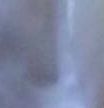StopMakingSense
Member
I'm aware of warm and cool lighting, but it'd have to be really intense to make something white look that blue. You'd basically need a special blue spotlight which is not something you'd assume in a photo like that.
Nah, it seems like on the edge of what you could get with photo balanced for warm light with shadowed daylight (which is even cooler than direct daylight). That mixed with a shitty cell camera, its well in the realm of plausibility, at least mentally. Also in the interpretation, the cell cam has greatly underexposed the dress, which would amplify the appearance of the saturation of the blue. ( I am a photographer )














